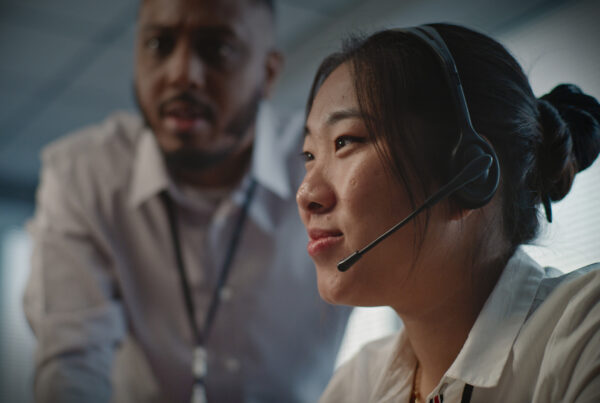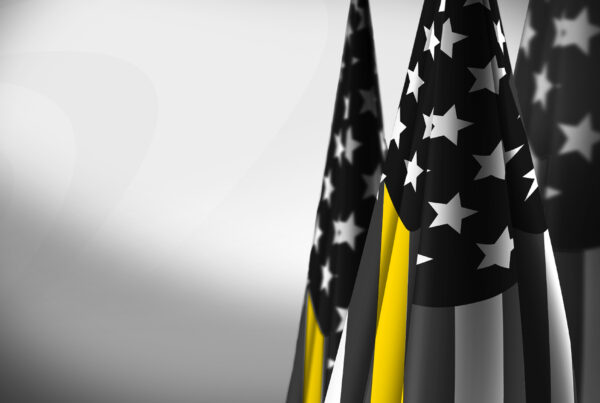Public Safety, a critically important industry, is showing signs of stress more than ever. Many 911 organizations around the country are working with empty seats as job postings go unfilled, and remaining staff face the stress of mandatory overtime and burnout. As a result, agencies are seeing turnover rates of 30% or higher.
When PowerPhone was started 40 years ago, it was based upon a dedication to giving telecommunicators the training and tools they needed to succeed as the first-first responders. Here are seven ways we’ve learned over the years to give emergency call takers the skills and confidence they need to take the call.
1. Enable Faster Dispatching
Our Total Response software is designed to help telecommunicators capture accurate information they need to determine dispatch as quickly as possible. The key is having a program that can be flexible, since no two 911 calls are exactly the same. Winging it without protocols can lead to too little or unnecessary information being collected; too rigid a system requires asking needless and redundant questions and delaying dispatch. From a stress reduction standpoint, it is exactly what the call taker needs: the ability to respond as rapidly as possible with software that supports their processes.
2. Integrated Call Handling for ALL Calls
Switching between applications means seconds lost. This is why Total Response provides immediate access to Police, Fire, and EMS protocols from a single, integrated, user-friendly tool. This makes it faster and easier for a call taker to gather the information required to make a dispatching decision, while continuing to collect information to share with on-scene responders enroute.
The dynamic situations telecommunicators face has become increasingly complicated. It is essential to have one tool to guide their information gathering to support more accurate dispatch decisions. A call that might begin as a medical emergency could quickly escalate. For instance, a person lying face down initially appears to be an EMS call. Upon further discovery, the bullets in the chest indicate this is crime scene and law enforcement needs to be dispatched.
Giving the call taker the freedom to easily work within a single, integrated software helps them to perform at a higher level, reducing the stress of dealing with complicated scenarios.
3. Immediate Access to Life-Saving Tools
There’s plenty of stress for the call taker when the call is: “Help! My baby is choking!” Or, “My house is on fire, and I’m trapped on the top floor!” Or “My dad’s stopped breathing!” In cases like these, the telecommunicator truly becomes the first-first responder. Total Response has a full library of pre-arrival instructions (PAIs) just a click away. Our PAIs on T-CPR includes both hands-on and with rescue breathing options, plus an automatic counter so the telecommunicator can tell the caller exactly when to compress. We also have an integration with PulsePointAED, a live registry that locates AEDs near the vicinity of incidents.
Giving call takers immediate access to the information they need to help save a life reduces stress and provides a sense of accomplishment.
4. A Complete Picture of the Situation
This sounds basic, but make sure your call handling software seamlessly integrates with your CAD system. This is essential to reducing stress for telecommunicators because it eliminates the wasted time and frustration of re-entering data into a separate system. Telecommunicators know that as soon as they enter information into Total Response, it is immediately shared with on-scene responders. The call taker can continue to enter information from the caller, providing ever greater situational awareness for on-scene responders who are on the way.
5. Strong Training Helps Telecommunicators Grow
Help your call taker grow in this profession by providing a rich library of online training programs, which can be accessed at their convenience, including during down time. We have trained more than 500,000 professionals worldwide. With our Site Licensed Training, your staff has unlimited access to online, self-paced training for an annual price. You decide what courses, what certifications, how often, and when your staff needs training.
These first five tips for retaining 911 call takers and helping them to thrive are easier to achieve because they are built into our Total Response call handling software and training. Our solution has always been designed for—and with input from—911 agencies, including the telecommunicators.
Here are two more:
6. Celebrate Their Victories
This next tip is more in the hands of call center supervisors. One of the frustrations of 911 telecommunicators is when they excel in being that first-first responder, they rarely hear about how their efforts helped. Call center supervisors are in a good position to do selective follow-up calls to on-scene responders, or to research the final reports. If a telecommunicator guided someone through CPR, did the person survive? If the call taker told someone how to apply direct pressure to a bleed, did this give EMS time to save a life? Was there a happy ending for situations where the call taker was with someone through trauma or despair? You get the idea. Go searching for good news, and then celebrate the telecommunicator’s victory. Let them know that you appreciate what they are doing. Let them see the difference they’ve made in another person’s life.
7. Provide Resources for PTSD
Researchers have found that 911 call takers can suffer PTSD from a singular traumatic call, or from the cumulative toll of dealing with so many calls from people in distress. Call center managers can reduce stress and enhance employee retention by monitoring their call takers for signs of PTSD and checking in with them after exceptionally stressful calls. Some centers have a quiet room where telecommunicators can decompress after a hard call. Others work to ensure that telecommunicators have free and easy access to mental health specialists on an as-needed basis. It makes a difference knowing that the resources are they to help call takers should they need them.
PowerPhone has a long, proud history of moving the industry forward, powering the evolution of the telecommunicator’s role. From the beginning, we have provided emergency call takers with the skills and confidence they need to take the call. Today, it goes beyond that as we work to help them thrive in their critically important profession.

Tara Milardo
VP
Tara drives strategic partnerships, sales and marketing at Total Response, fueled by her passion for improving 911 and providing agencies with the tools and connections to keep their communities safe.








